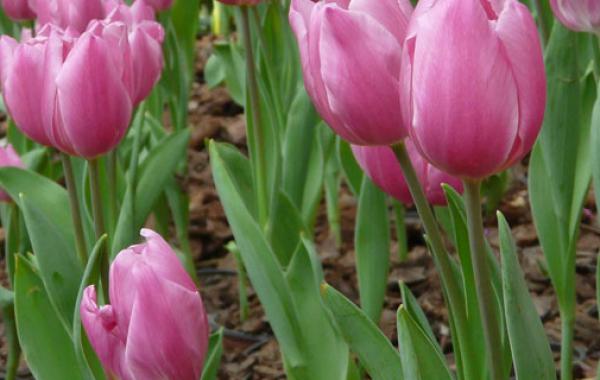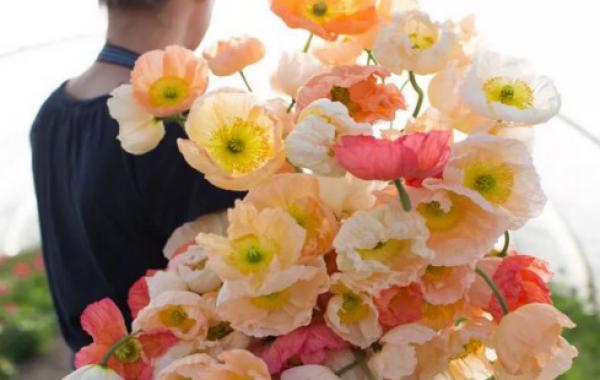Control methods of Flower Diseases and insect pests in Spring
The common diseases and insect pests of flowers in spring are powdery mildew, rust, black spot, leaf shrinking, yellowing, etc., as well as longicorn beetles, aphids, shellfish, beetles and other pests.
Prevention and cure method
Powdery mildew: common in impatiens, melon and leaf chrysanthemum, dahlia, rose, crabapple and other flowers, mainly in leaves, but also harmful to tender stems, flowers and fruits. At the beginning of the disease, there are several discoloration spots on the leaves, but there is no obvious edge around them, and then the small spots synthesize large spots. With the development of the disease, the disease spot is covered with white powder, the leaf shrinks, the flower suffers and cannot blossom normally, and the fruit stops developing. The onset period of the disease can be from early spring to summer to autumn. The prevention and treatment methods are as follows: early removal of diseased leaves at the beginning of the disease to prevent spread; when the disease is serious, it can be sprayed with 0.2 to 0.3 degrees stone sulfur mixture, or 1000 times 70% methyl Tobu body fluid.
< 2 > Rust: most of the flowers and trees prone to this disease are Rosaceae plants such as Tripterygium, including rose, weeping begonia and so on. In addition, peony and carnation are also susceptible to this disease. The disease occurred in early spring, with spotted chlorosis on the tender leaves at the initial stage, small black spots on it, yellow circles in the tender leaves at the initial stage, and gray-white wool on the reverse side, and the yellowish-brown powder was produced between August and September, which spread to the juniper tree with the wind, and spread with Rain Water in the early spring of the next year, and then endangered the above flowers. Therefore, the disease can only be sustained by parasitic harm on these two plants. In the theory of diseases and insect pests, it is called host parasitic disease. When the harm is serious, it will cause fallen leaves, and when it is lighter, it will cause disease spots, affecting the appearance and photosynthesis. The prevention and control methods are as follows: try to avoid planting juniper cypress and other transferred host parasitic plants nearby; in early spring, about mid-March, start spraying 400 times 20% vermicellin emulsion or 50% bacilli special wettable powder, and spray again after about half a month until early April. If there is little rain or drought in spring, you can spray one less time.
< 3 > Leaf shrinking disease: it mainly occurs on the leaves of Rosaceae plants such as plum and peach. When the leaves were unfolded at the beginning of dry spring, the damaged leaves were malformed and swollen and the color turned red. As the leaf grows and curls in the opposite direction, the disease spot gradually turns white, and powdery matter appears on it. Due to the damage to the leaves, the tender shoots can grow normally and even die. If the leaves are seriously damaged, they will fall, affecting the tree potential and reducing the amount of flowers. The prevention and control methods are as follows: in the early stage of the disease, the diseased leaves with symptoms were removed in time to reduce the spread of the disease, and 3 ~ 5 degrees of stone-sulfur mixture was sprayed before germination in early spring to eliminate the pathogen of overwintering inside and outside the bud scale and on the diseased shoot. If we can do this for two or three years in a row, we can prevent and cure the disease more thoroughly. For seriously ill potted flowers, it is necessary to apply more fertilizer and strengthen management in order to restore the tree potential in order to blossom more.
Aphids: also known as honey insects. Many kinds of potted flowers are harmed by aphids, such as peach, rose, elm leaf plum, plum blossom, cherry blossom and so on. Aphids mostly gather on the opposite side of leaves and feed on leaf sap for a living. Because of its fast reproduction speed, with the rise of temperature in early spring, the damaged leaves can not spread leaves normally, and the new shoots can not grow, which will cause leaves to fall off and affect flowering. When it is hot in summer, some aphids fly to other plants, such as vegetables, and then fly back to the trees to lay eggs for the winter. The control methods are as follows: 1000 times 40% dimethoate emulsion can be sprayed before spreading leaves after germination to kill the newly ovalized young aphids, or not to protect ladybugs and other natural enemies to eliminate aphids until the population growth and decline is out of balance. Natural enemies can not control aphids, and then consider medication. When using this method, it is necessary to use the auxiliary method of pinching dead aphids in the team leader.
< 5 > scale insects: there are many species of scale insects, which are harmful to flowers and trees, and they are the most harmful pests. Tortoise shell scale, white lipid, round. Mulberry white scale, white, pointed. Oyster scale, dark brown, long-shaped male and round female. Armor scale, dark brown, round, shaped like armor. Plants vulnerable to shell insects are camellia, pomegranate, oleander, rhododendron, hibiscus, cherry blossom, plum, peach, begonia, rose and so on. The larvae first suck the sap on the leaves to make the leaves green, and when adults, they mostly suck sap on the branches, which seriously weakens the tree potential and affects flowering. The control methods are as follows: squeeze to death by hand or scrape off the pests on the leaves and branches with a knife, spray 1000 times 40% dimethoate emulsion once or twice in the larval stage, with an interval of 7 to 10 days.
< 6 > Red spider: mites. The worm is so small that it is almost indistinguishable to the naked eye. Most of them are aggregated, and the reproduction speed is very fast. There are many vulnerable plants, such as rose, rose, peach, cherry blossom, rhododendron and so on. Insects gather on the back of the leaves to suck sap, which initially makes the leaves green, and finally causes the leaves to fall off and the new shoots to die. In severe cases, the young trees grow weak and even die. The prevention and control methods are as follows: spraying 1000 times 40% dimethoate emulsion or 1000 times ~ 1500 times trichloroacaricidal emulsion in the initial stage. When the summer temperature is high, the breeding field of the insect is fast, and it is often not as good as to control it. It is necessary to spray pesticides early, and 3 ~ 4 times in a row, with an interval of about 7 days, and do not use a single pesticide to avoid drug resistance.
< 7 > nematodes: nematodes harm plant roots and cause abnormal plant development, including orchids, carnations, daffodils, peonies and so on. When pests are light, they are often difficult to detect. When the insect pest is serious, the plant grows badly and blossoms poorly. As there are many kinds of nematodes in the soil, the worms are young and almost invisible to the naked eye, so it is only based on prevention. 20 ~ 30 3% furan granules can be added to each kilogram of planted soil to dissolve and slowly release nematodes to eliminate nematodes.
< 8 > Caterpillars: there are tentorium caterpillars, boat caterpillars and so on. Eating habits are very miscellaneous, almost harmful to all plants, showing fulminant. It is necessary to prevent and cure it as soon as possible. Manual capture can be used and 1000 times 40% dimethoate emulsion can be sprayed if necessary.
< 9 > Spodoptera litura: larvae eat in the branches, peach, plum and cherry blossoms are common, which can seriously break 2-3-year-old branches and affect the posture of the tree. The prevention and control methods are as follows: pay attention to observation at ordinary times, when there are wormholes in the branches and excrete small granular feces from the wormholes, the iron wire can be used to dig out the wormholes to the wormway, or cut the branches to kill pests. The insect is reddish brown and has hairs on its head and body, which is obviously different from the milky white of longicorn beetles. This method is also used to control longicorn beetles. You can also use 150 times 80% dichlorvos emulsion, inject it through the faecal outlet of the worm track with a syringe, and then block it with wet mud to kill pests. # p# Page title # e #
< 10 > Beetles or beetles: leaves or flowers of omnivorous pests. Roses are vulnerable. Artificial capture is the main method of prevention and control.
< 11 > Underground pests: grubs, namely beetle larvae, white. Ground tiger, green and black. Feed on the root or root neck of a plant in the soil, often causing plant death. The method of prevention and control is to dig it from the entrance of the hole in time.
Related
- What if the leaves of potted flowers turn yellow?
- Florescence Control of several Flowers
- Anti-freezing technology and post-freezing nursing technology of flowers
- What is the classification of flowers? What are the common methods of flower classification?
- Prevention and control of alkali and acid damage of flowers in courtyard
- Technology of Anti-freezing and restoring growth of Flower seedlings in greenhouse and greenhouse
- How does flower fertilization not hurt the root? Fertilization technology of flowers
- Key points of disinfection in flower greenhouse
- Several pesticides that are banned or used cautiously in flowers
- How to fertilize the flowers that watch the leaves?



